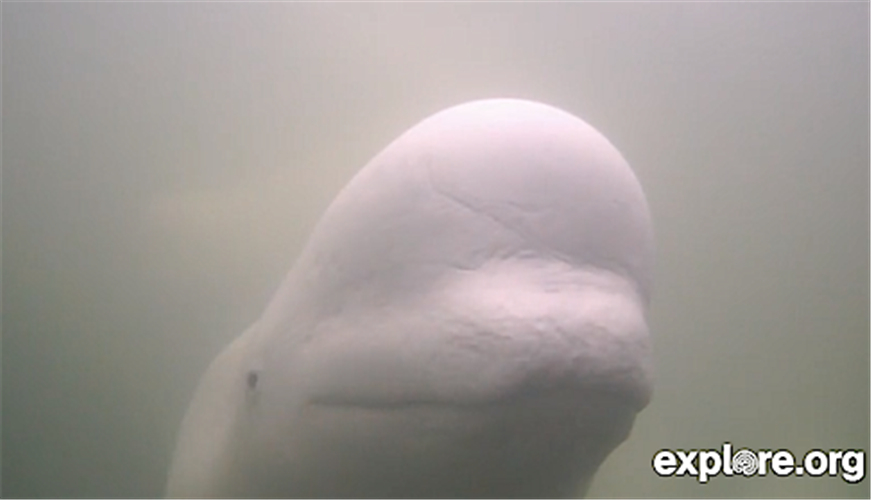Ever wondered about the unique look of beluga whales? Alysa McCall, Field Programs Manager with our partners at Polar Bears International, give us some answers on their ability to shape shift!
Belugas are social animals that assemble in pods of 2-25 whales, often with similar genders and age groups. Belugas hunt within their pods and several pods may join together to form groups of 200-10,000 whales during migration. In large social groups, communication is critical; luckily belugas are great at it.
Like many other animals, belugas use echolocation to navigate and communicate. Echolocation is where animals produce calls and listen to the echoes of those calls that return after hitting objects. Belugas can use these echoes to locate and identify objects nearby, helping them to navigate and forage. Belugas produce chirps, clicks, whistles and clangs at lower frequencies to scan the landscape, and at higher frequencies to obtain more detail. One important feature belugas have that allows them to make this variety of sounds is their melon, the big bulbous lump on their foreheads that they can plump into different shapes.
While the melon’s function is not fully understood, scientists believe it lets belugas focus the sounds used in echolocation. A beluga whale can change its melon’s shape at will, which then affects the size, shape, direction, and frequency of the echolocation beam. These sounds also relay important information to fellow beluga whales, including sounds that allow them to maintain contact while apart, and alarm calls when danger is nearby. This fixation on noise that belugas have helps us on the cams: the belugas are attracted by the noises of the propellers on the boat, so they love to come up close.
Get on deck and go underwater with our Beluga Whale Live Cams!




wow, thanks for that information very interesting